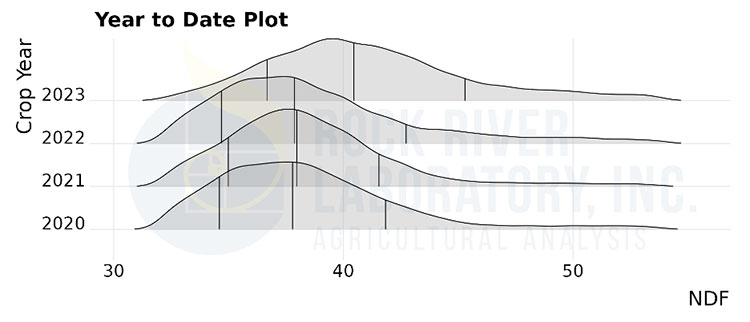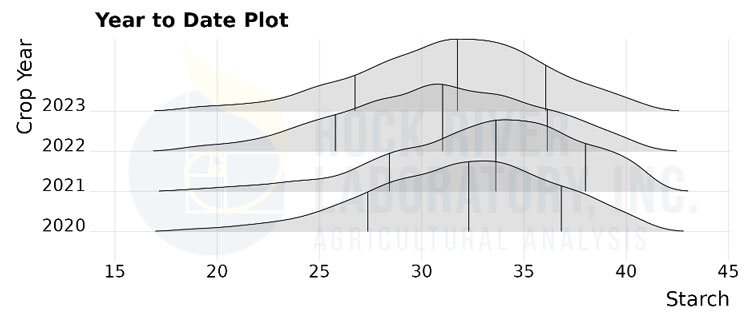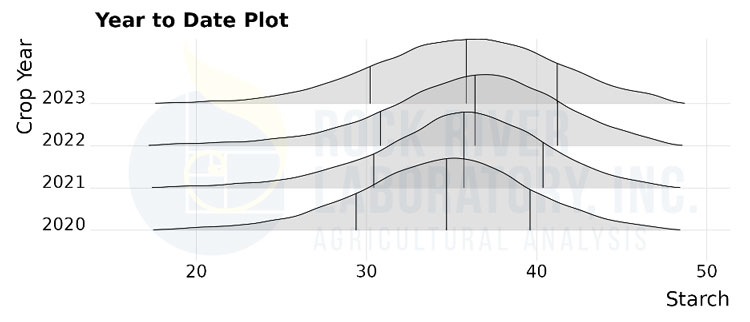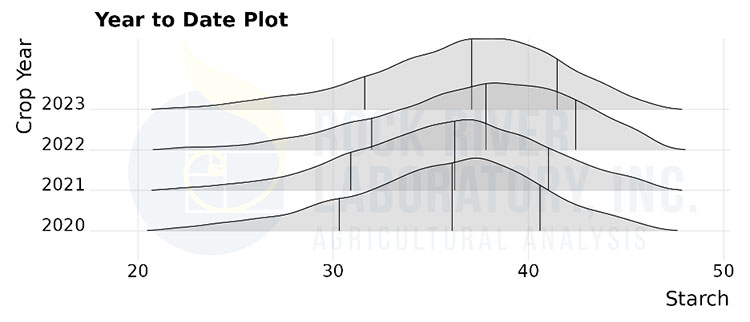
This year has certainly had an impact on farmers across the U.S. Speaking specifically to the growing season and crop year, it’s abundantly clear that growing conditions in 2023 influenced the resulting alfalfa, grass, and corn yield and quality from East to West. In 2022, the South and West continued farming under a decade-long drought, whereas the Midwest and Eastern regions grew crops under fairly good growing conditions. Then, in 2023, the script flipped 180 degrees as Southern and Western growers had rainfall and water and the Midwest and Eastern U.S. trended drier but with exceedingly variable rainfall. The outcome in crop yield and quality has been intriguing to say the least.
We’re now at the point where we’re able to begin projecting the 2023 crop quality. Think of this point in time analogous to an election day and where the polls have been closed for a couple of hours. We can start to make early projections, but more is to come. Hence, let’s delve into the early insights, summarizing thousands of results and focusing on the fiber or starch. I’ll also briefly speak on carbohydrate digestibility to project feeding potential for 2023 forages.
Fiber dictates energy value

Midwestern haylage turned out exceptionally well given a drier first half to the growing season. There were more leaves and less stems, returning much lower fiber content for 2023 haylage relative to the prior several growing seasons. This means higher relative feed value (RFV) and more energy per pound across the board. Slightly elevating the haylage value, fiber digestibility also trended up a bit (data not shown). In general, haylage quality will be excellent for Midwestern producers.
The Eastern haylage trended differently from both other regions, with similar fiber content on average for 2023 relative to prior growing seasons. This likely materialized through heterogenous growing conditions with ample to excessive rainfall in some regions but drier conditions in others. There doesn’t appear to be a strong trend in fiber content one way or another for Eastern dairy producers. Eastern haylage fiber digestibility does appear to be up slightly, which will enhance feeding value (data not shown).
The starch and fiber content in silage

Growers out West had ample water to irrigate crops. I heard of excellent yields with potential for greater grain yields relative to 2022. However, when looking at starch levels in 2023 silage (Figure 4), the starch content is similar to 2022. We likely arrived at this spot in different ways.
During the 2022 growing season, crop inputs and water were expensive. The net outcome was lighter grain yields and starch content. In 2023, crop input prices declined and water was ample, but taller corn likely diluted the grain and netted out in a similar spot to 2022 silage. Silage moisture levels aren’t notably different, so harvest timing was not an issue. Western producers should anticipate slightly lesser starch content on average. Starch digestibility is also notably down for 2023 (data not shown), so feeding potential will be similar to or below last year’s silage.

Following the exceedingly dry growing conditions across the Midwest and parts of the East to start the year, the fact that 2023 corn silage materialized in reasonable starch levels is justification to jump for joy (Figures 5 and 6). Around mid-year during crop discussions and webinars, we recognized the crop had potential despite heterogenous emergence, short statured corn, and widely variable tasseling. The potential was rooted in hope for timely rainfall during pollination and ear filling periods.

The crop looks to have achieved this potential, also in part thanks to excellent seed genetics and agronomic management gains compared to 10 years ago. Starch digestibility continues to trend with 2021 and 2022 at this point (data not shown), so anticipate the silage needing a few more months to feed to its full potential.
While Eastern and Midwestern moisture in silage appears to be fairly stable relative to prior years on average, a note of caution is needed. Averages this year will be deceiving, especially for those with drought to start the year. We’ll need to pay more attention to the variance within 2023 silage. I’ve had numerous dairy producers and growers express wider ranging moisture and quality this year thanks to the growing environment. Furthering the point, many noted that harvest crews needed to jump around to different fields to a far greater extent relative to other years.
This will all equate to greater field to field variance showing up within our silos this year and a need for greater moisture and nutrient sampling to identify and manage the changes week to week. We’ll likely cover this in future articles in the months to come as we open bunkers, piles, and silos.
Remember, we’re just a couple months into the “post-harvest” period and the polls have just closed. For a more extensive preview and discussion, tune into the Hoard’s Dairyman monthly webinar featuring University of Illinois’ Professor Emeritus Mike Hutjens and Hay & Forage Grower Managing Editor Mike Rankin for a 2023 crop quality discussion. Annual growing conditions continue to impact hay, haylage, and corn silage quality, and 2023 looks to be a stark contrast relative to last year.







